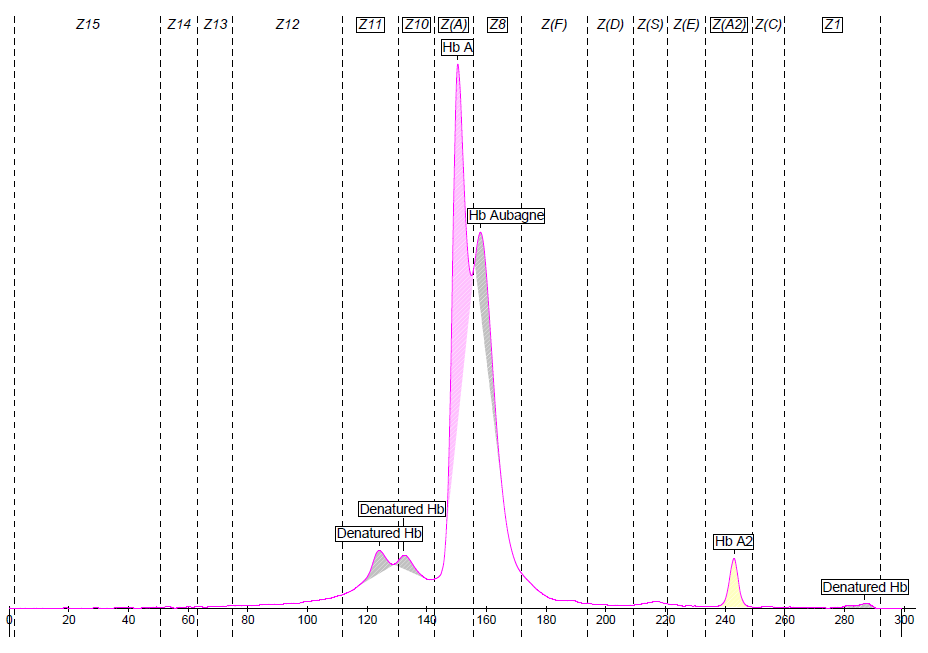General information
Globin chain involved
Status
Heterozygous
Migration zones
Migration positions
158
Sickle Cell Disease: No
Thalassemic variant: No
Capillary Electrophoresis
Fractions
Value %
Denatured Hb
4.8
Denatured Hb
2.5
Hb A
65.5
Hb Aubagne
17.2
Hb A2
8.6
Denatured Hb
1.4
Comments
Hb A2 is overestimated due to the partial integration of Hb A and Hb Aubagne (both fractions being underestimated). It is recommended to delete the automatic quantification of the two main peaks and then quantify them together manually.
Mutation data
Heterozygous Hb Aubagne
Mutation
HGVS Nomenclature
Beta 64(E8) Gly>Ala
HBB:c.194G>C
Hematological parameters
Name
Result
RBC Count
Low
Total Hemoglobin
Low
MCV
No information
MCH
No information
Blood smear
No information
Other analysis
No information
Comments on hematology
Mild hemolytic anemia
Clinical context
Clinical presentation
No data
Clinical risk
Could generate relevant hemolytic anemia in combination with Beta-thalassemia
Variant information
Stability
Unstable
Oxygen affinity
No data
Ethnicities in literature
Found in Causasian populations: met in a French family from South of France
Comments on variant information
Scientific Literature
Scientific references
Globin Chain involved
Status
The term "Double Heterozygous" refers to cases of heterozygosity on different globin chain types, while the term "Compound Heterozygous" refers to cases of heterozygosity on the same globin chain type.
For example, S/G-Pest is a Double Heterozygous case (beta and alpha-globin chains are mutated) and S/C is a Compound Heterozygous case (only beta-globin chains are mutated).
Migration zones
Migration positions
Sickle Cell Disease
Thalassemic variant
Capillary Electrophoresis
Variant information
Ethnicities are provided for informational purposes only and are based on scientific literature and conference posters.
A hemoglobin variant may therefore be present in populations of ethnic origins or countries not listed here.

